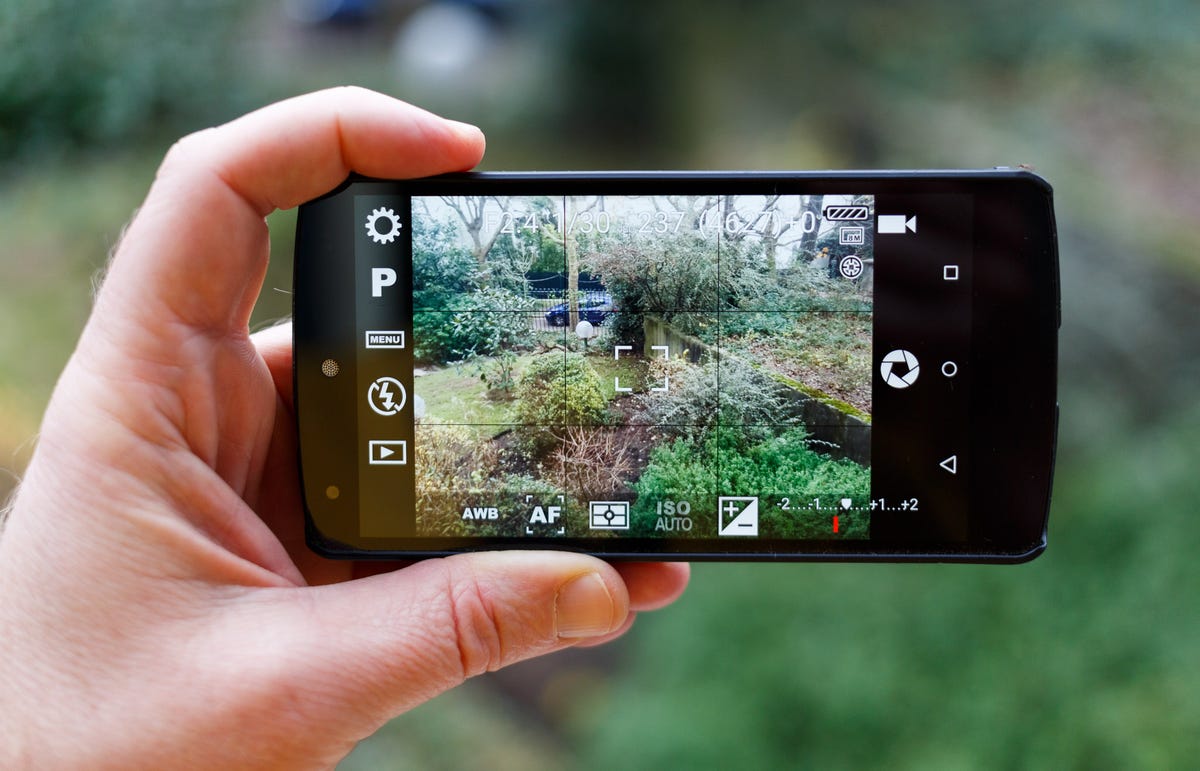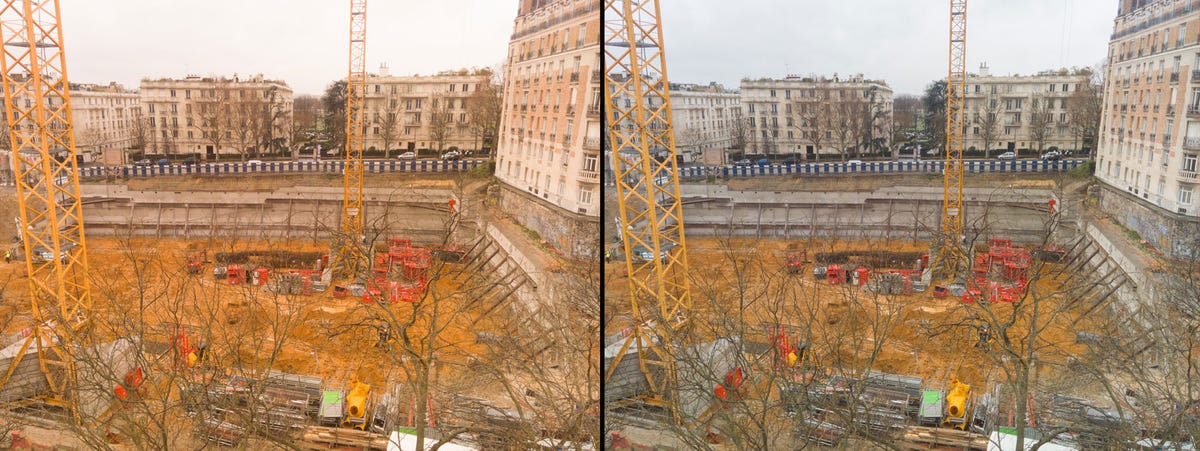
Stephen Shankland/CNET
For more than a decade, photographers using traditional cameras have been able to get higher image quality by “shooting raw.” The new Android 5.0 brings that ability to mobile-phone photographers, with software support now arriving.
Raw photos come from a camera’s image sensor before the camera processes them into the JPEG format, a format that’s convenient when sharing photos with friends. Although raw photos involve a lot more work because the processing must be done by hand, photo enthusiasts like the flexibility raw provides.
Digital SLRs, mirrorless cameras and high-end compact cameras all come with raw capabilities, as the camera industry caters to photo enthusiasts willing to pay for image quality. But raw photo support is almost nonexistent in the mobile phone world. The exceptions so far have been some designs from Nokia — now Microsoft’s phone division — including the Lumia 1520 and 1020.
Now you can add some Android devices to the list: the Nexus 5 and Nexus 6. And with an update to the FV-5 camera app, photographers can make use of the raw ability.
Photography has become central to mobile phones as people record their lives and, as mobile phone cameras steadily improve, artistically express themselves. Google’s decision to add raw photo support capitalizes on this trend. It also gives Android phones a potential edge over Apple’s iPhones, which have offered consistently top-notch photo quality but, so far, no support for raw photography.
Adobe happy
“Raw data is even more valuable for phones and tablets than it is for traditional cameras like DSLRs,” said Tom Hogarty, Adobe’s director of product management. “Smartphone images are captured using smaller sensors and lenses and can benefit greatly from advanced raw-based software processing tools, such as highlight recovery, tone mapping and noise reduction.”

 Enlarge Image
Enlarge ImageStephen Shankland/CNET
Not everybody will be able to take advantage of Android’s new raw support. Phone makers must make Android 5.0 available and expose the raw ability to app developers. That means that, as with traditional digital cameras, it’s likely only higher-end models will see raw support.
Raw support isn’t likely to appeal to mainstream shooters. HDR (high dynamic range) technology already expands what an ordinary JPEG can do by layering multiple frames at varying exposures to create a single image with greater luminosity. But the more mobile-phone cameras improve, the more enthusiasts will come to rely on them, and the more appealing raw support will become.
Raw photography requires people to fiddle with their photos in software that acts like a digital darkroom. For people who like that sort of thing — and there are plenty — raw photos give control to the photographer instead of going with processing assumptions that the camera makes. Cameras ordinarily bake those assumptions into JPEG images, but raw photos leave the original data intact for maximum flexibility.
Raw advantages
One raw advantage is that it doesn’t discard data through the compression algorithms JPEG uses to cut file size. JPEG doesn’t produce bad compression artifacts at high-quality settings, but photo enthusiasts still often prefer the best image data they can get.
A corresponding drawback, though, is that raw files take about 3 times the storage space as JPEGs — typically about 15MB instead of 5MB in my tests with FV-5. That’s smaller than short video files, but shooting raw photos does fill memory noticeably faster.


Stephen Shankland/CNET
A second advantage is raw files are stored with more bit depth — that is, a bigger range of numbers to describe the full spread from fully dark to maxed-out brightness. Those finer gradations also help image quality, especially when using software to pull back overexposed bright patches or to find details in shadowed areas. It also helps when trying to fix overexposed or underexposed photos.
Raw photographers get more control over white balance too. Photos in the shade often give people a blueish cast, and indoor shots can make them downright orange. That’s easier to correct in raw shots.
Lastly, raw photography allows people to decide how much sharpening, contrast, color saturation and noise reduction is appropriate.
DNG boost
Mobile-phone photography also helps Adobe with one of its ambitions, the promotion of its Digital Negative (DNG) format for raw data. Each camera produces a proprietary raw file, requiring companies like Adobe and Apple to figure out the new formats and update their software. In contrast, DNG provides a standard way to package raw data, and it’s the format that the FV-5 app and Nokia’s mobile phones produce for raw photos.
It’s not a crippling burden for photo-editing software makers to support new raw photo formats that arrive with the relatively small number of high-end cameras each year. But if raw photography catches on with dozens or even hundreds of new mobile phone models, DNG will make it much easier for photo-editing software to support those phones.
Yes, shooting raw is more complicated than shooting JPEGs, but for those bitten by the photo bug, it’s worth it.




